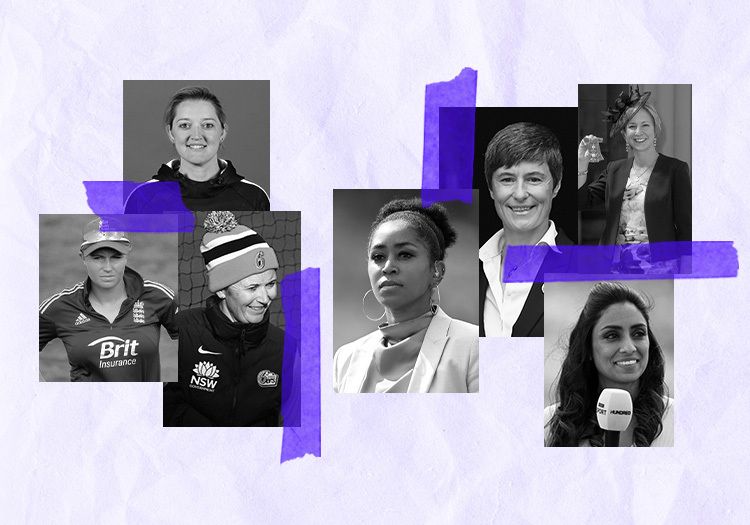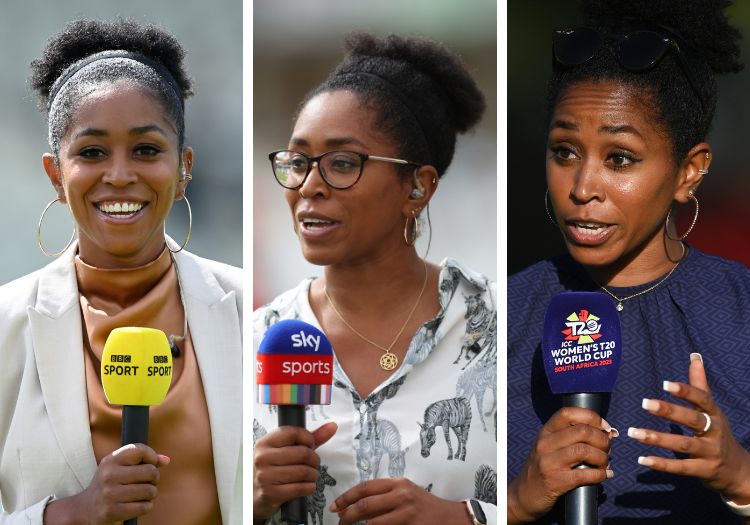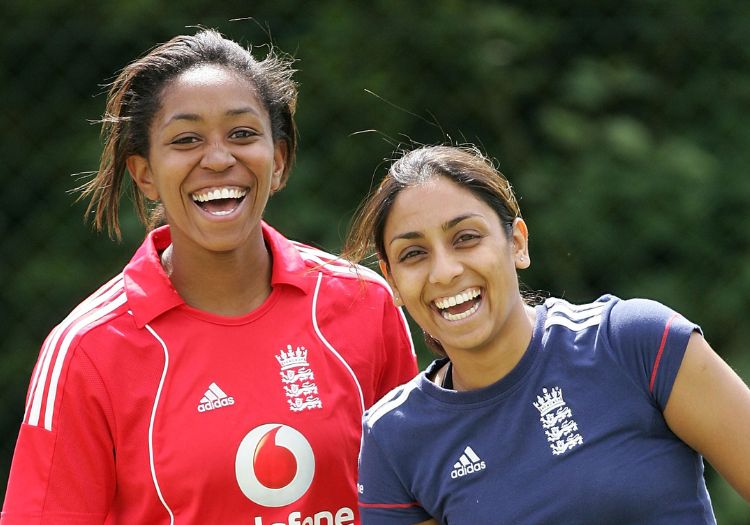NICK FRIEND – SPECIAL REPORT: Spread across the cricketing landscape, members of the England Women teams through the 2000s are running the show; this part of a wide-ranging project looks at Isa Guha and Ebony Rainford-Brent's rise as broadcasters

The night before Lydia Greenway sat down on the media balcony at Taunton for this chat during last year's drawn women's Test against South Africa, she sent a text to Isa Guha.
The pair have remained close friends more than a decade on from their last game together, so much so that Greenway was a bridesmaid at Guha's wedding. Both have television commitments to fulfil in late June – Greenway as one of the voices of the women's game on Sky Sports, Guha as the face of Wimbledon for the BBC, a scarcely believable transition. "She finds it fairly mental as well," laughs Katherine Sciver-Brunt.
"I just said: 'I'm really proud of you,'" Greenway recalls, remembering the tone of that message. "I do often find myself – if I'm in a tricky situation – thinking: 'What would Isa do?'"
Once upon a time, they were teammates; now, Guha – the first British-Asian woman to play for England – is leading the way as one of the most recognisable, accomplished sports broadcasters of her generation. There will be many watching who have no inkling this is her second career.
Ebony Rainford-Brent gets the same and doesn't mind that. "In some ways, I think it's a good thing," she says, accepting that there simply wasn't any mainstream awareness of who they were as cricketers. "I always prefer people to be intrigued or surprised when they find out rather than having my cards up front. When people realise that you did actually play, it adds a bit of credibility."
Nonetheless, being female voices on men's cricket – even with World Cup medals to show for it – hasn't ever been straightforward or without a backdrop of misogyny and scepticism.

Isa Guha is one of the most accomplished broadcasters of her generation (Ryan Pierse/Getty Images)
Bryan Henderson, Sky Sports' head of cricket, once told The Cricketer of his working equation: how with every passing year, a commentator becomes less relevant so has to become more competent. Few have managed that shift better than Guha and Rainford-Brent, both – irrespective of gender – now two of the best around, following in the footsteps of Ali Mitchell, an inspiration to both.
"It's just part of what I do now," says Rainford-Brent. "About halfway in, it was still a bit new and people didn't know who you were, so you were still trying to sell yourself and convince people that women could be in this space. It has felt a lot more normalised for us in the last five years.
"When I go into a lot of commentary boxes now, it's a great community – men and women are covering either. I feel like there has been progress: it feels normal now. I used to question a lot and you'd get the tweets. But those have died down. I think it feels natural and comfortable now. It's starting to normalise."
Greenway has been at it for more than half a decade too, introduced to the broadcasting world just after her retirement when the BBC asked if she would join their coverage in the West Indies one winter. She is a regular voice on the T20 Blast now, as well as working in the women's sphere, including a lead analyst role at the WPL auction. Is there a difference in how she covers them?
"The commentary is the same, but the way that you feel when you're commentating is quite different," she admits. "When you're a female, you've played the game and you know it inside out. The people who follow the game, I know they love the women's game.
"But when you're a female voice on the men's game, it is a very different dynamic – you know that the viewers don't necessarily know who you are, and you have to be mindful of that."

Ebony Rainford-Brent has appeared everywhere on commentary (Getty Images)
Greenway was an international cricketer for well over a decade. Guha, on the other hand, retired young, inspired by her mother's pragmatism. But even her England career, which began as a 16-year-old, contained an ascent to the top of the ICC's bowler rankings.
"Life is what you make what you make it," says Guha. "It's meant that I've been able to do something else, and I want to experience everything that life has to offer, and I feel very grateful that I've been able to go into broadcast now and do what I do and still remain in the sport by being able to commentate.
"At the start of that journey there weren't a lot of women doing it. So, to now look around and go wow, we've got so many amazing female voices. Commentary and presenting is just so natural for these women now and it's become normalised that's ultimately what excites me being able to be part of change."
She points to Alice Capsey and Issy Wong, two of English cricket's new-age youngsters: Wong has already shown herself to be equally adept on the mic as on the field.
"They already understand the influence they could have on young people."
For the same reason, Guha recently launched Take Her Lead, a charitable organisation aimed at giving young girls what they need to succeed in the sport. She lists the precedents set by Rainford-Brent and Greenway as a factor in finding the confidence to use her own profile like that. Separately, she is a patron for the South Asian Cricket Academy.
"I always look at inequalities as a journey, and you look at where you're at on that journey. So, I could look at women's cricket right now and say, well, we've moved this far in the last 20 years, and how amazing is it that we've now got 60 professional cricketers in this country. So, I'm truly grateful for that and I think it's important to be grateful.

Ebony Rainford-Brent and Isa Guha were teammates before they were broadcasters (Christopher Lee/Getty Images)
"But I think quite a lot of the time, women are sort of made to feel that way and that's all, and to never push themselves further than that for fear of losing their place in wherever they are – not just in cricket but in the workplace, or wherever they are in life. That's been drilled down over years, and years and years.
"So, right now, I look at the journey where it's at, but then I compare it to where the men are and I go: 'Okay, we've still got a long way to go.' So, that's generally my feeling. How do we push it forwards at this stage where we're at a real tipping point where you can't look away any longer?
"It's coming. Women and girls are inspired to want to play sport and showcase what they can do."
There is a lot of love for Guha. Greenway is far from alone in turning on Wimbledon or Australia's home Tests and being mesmerised by the journey of a former teammate, once upon a time a teenage receptionist in a Buckinghamshire badminton centre.
"Isa has done a huge amount for the sport," says Heather Knight, smiling proudly. "She's probably broken more barriers than she did by playing cricket for England. You have to turn on Antiques Roadshow to see a TV programme that Isa's not on. She's someone I've looked up to massively throughout my career: she looked after me at Berkshire and when I first played for England."
"She's an absolute gem," adds Charlotte Edwards, whose apartment Guha uses to do her washing when the pair are in Australia over the winter. "She will always drop you a text to see how you're getting on. That's the type of girl she is, so down-to-earth, so Isa.
"She hasn't changed. None of the players have changed. They've kept their ways about them, which is great."
Over six sections - available via the links below (and all free to read on March 8, International Women's Day) - this project tells the story of how these women graduated from their careers as international cricketers to become industry leaders following their retirements.